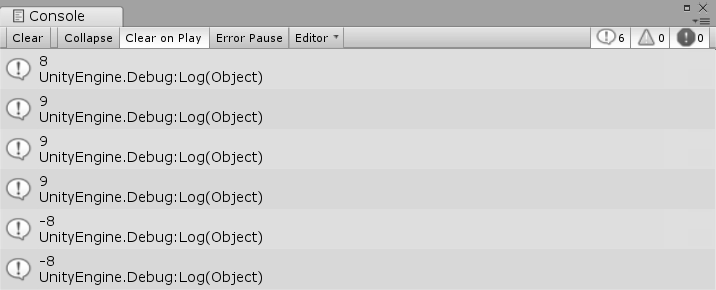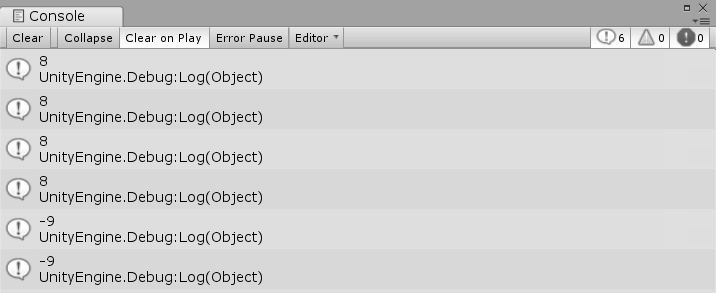一、Mathf.Round 四舍五入
四舍五入取最接近的整数,返回值是 float 类型
如果数字的末尾是 .5,不管是偶数还是奇数,将返回偶数
例如:
1 Debug.Log(Mathf.Round(10.0f)); 2 Debug.Log(Mathf.Round(10.2f)); 3 Debug.Log(Mathf.Round(10.7f)); 4 Debug.Log(Mathf.Round(10.5f)); 5 Debug.Log(Mathf.Round(11.5f));

由于末尾是 0.5,所以返回偶数
而 11 不是偶数,所以分别返回 10 和12
二、Mathf.RoundToInt 四舍五入
四舍五入取最接近的整数,返回值是 Int 类型整数
如果数字末尾是 .5,不管是偶数还是奇数,将返回偶数
例如:
1 Debug.Log(Mathf.RoundToInt(10.0f)); 2 Debug.Log(Mathf.RoundToInt(10.2f)); 3 Debug.Log(Mathf.RoundToInt(10.7f)); 4 Debug.Log(Mathf.RoundToInt(10.5f)); 5 Debug.Log(Mathf.RoundToInt(11.5f));

由于末尾是 0.5,所以返回偶数
而 11 不是偶数,所以分别返回 10 和12
三、Mathf.Ceil 向上限值取整
向上限值取整,返回值是 float 类型
如果是负数 -8.8,由于取上原则,则取 -8
例如:
1 Debug.Log(Mathf.Ceil(8)); 2 Debug.Log(Mathf.Ceil(8.1f)); 3 Debug.Log(Mathf.Ceil(8.5f)); 4 Debug.Log(Mathf.Ceil(8.8f)); 5 Debug.Log(Mathf.Ceil(-8.5f)); 6 Debug.Log(Mathf.Ceil(-8.9f));

四、Mathf.Floor 向下限值取整
向下限值取整,返回值是 float 类型
如果是负数 -8.8,由于取下原则,则取 -9
例如:
1 Debug.Log(Mathf.Floor(8)); 2 Debug.Log(Mathf.Floor(8.1f)); 3 Debug.Log(Mathf.Floor(8.5f)); 4 Debug.Log(Mathf.Floor(8.8f)); 5 Debug.Log(Mathf.Floor(-8.5f)); 6 Debug.Log(Mathf.Floor(-8.9f));

原文:https://blog.csdn.net/ChinarCSDN/article/details/81284727
*** | 以上内容仅为学习参考、学习笔记使用 | ***